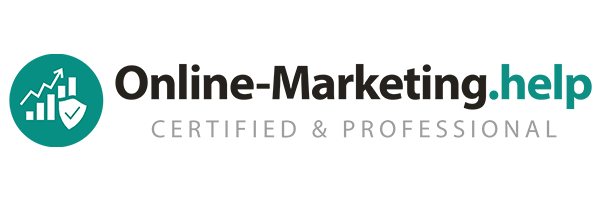Improving sales is a primary goal for any business, as it directly impacts revenue and growth. Achieving better sales results requires a combination of strategic planning, effective execution, continuous optimization, plus reliable webdesign and webhosting. This comprehensive guide will explore the importance of reliable webdesign and webhosting, including leveraging data analytics and digital marketing, its benefits, key strategies, and tips for achieving sustainable sales growth with webdesign and webhosting.
Webdesign and Webhosting
In the digital age, your website serves as a vital sales tool, providing the first impression many potential customers will have of your business. A user-friendly webdesign and webhosting can significantly enhance your sales performance by attracting more visitors and converting them into customers. Effective webdesign and webhosting ensure that your site is visually appealing, easy to navigate, and optimized for both desktop and mobile devices. This makes it more likely for visitors to stay on your site longer, engage with your content, and make a purchase.
Reliable webdesign and webhosting are equally important in supporting your sales goals. High-quality web hosting ensures that your website is always accessible, loads quickly, and remains secure. Downtime and slow loading times can frustrate visitors, potentially driving them to competitors. On the other hand, a fast, reliable website fosters trust and encourages customers to complete transactions, thereby boosting your sales.
Leveraging data analytics and digital marketing further enhances your ability to improve sales. Data analytics helps you understand customer behavior, preferences, and trends, allowing you to make informed decisions and tailor your marketing strategies effectively. Digital marketing, including SEO, social media marketing, and email campaigns, drives targeted traffic to your website, increasing the likelihood of conversions.
In summary, to achieve sustainable sales growth, businesses must focus on strategic planning, effective execution, and continuous optimization. Integrating reliable webdesign and webhosting with data analytics and digital marketing strategies ensures a robust online presence, enhances customer experience and ultimately drives sales performance. This guide will provide you with the insights and tools needed to optimize your sales processes and achieve long-term business success.
What are Webdesign and Webhosting?
Webdesign and webhosting are integral to creating and maintaining websites. Effective webdesign involves elements such as colors, fonts, images, layout, and navigation. Aesthetics and functionality are combined to create a cohesive look and feel that resonates with your target audience. Optimizing the user experiences (UX) for webdesign and webhosting is crucial, ensuring visitors can easily find the information they need and navigate the site seamlessly. Whether you’re building a simple portfolio website, an e-commerce store, or a corporate website, good webdesign and webhosting are essential for making a positive first impression and achieving your business goals.
Webhosting, on the other hand, is the service that allows your website to be accessible on the internet. It involves storing your website’s data on a server and ensuring it remains available to users around the clock. Key considerations for web hosting include uptime reliability, security features, speed, and customer support. Good webdesign and webhosting providers will offer scalable solutions to accommodate your website’s growth and ensure it performs optimally even during high traffic periods.
Benefits of good Webdesign and Webhosting
A well-designed website offers numerous benefits for businesses:
Professionalism and Credibility
A professionally designed website conveys credibility and trustworthiness, making a positive impression on visitors and potential customers.
Enhanced User Experience
Good web design ensures that visitors can navigate your website easily, find the information they need quickly, and enjoy a seamless browsing experience.
Improved Brand Perception
Your website serves as the online representation of your brand. A visually appealing and cohesive design helps reinforce your brand identity and create a memorable impression.
Higher Conversion Rates
An intuitive and user-friendly website is more likely to convert visitors into customers. By optimizing the design and layout of your site, you can encourage visitors to take action, such as making a purchase, filling out a contact form, or subscribing to a newsletter.
Mobile Responsiveness
With the increasing use of smartphones and tablets, it’s essential for websites to be mobile-responsive. A responsive design ensures that your site looks and functions well on all devices, providing a consistent experience for users regardless of the device they’re using.
Key elements of Webdesign
Effective web design incorporates several key elements to create a visually appealing, functional, and user-friendly website:
1. Visual Design
Visual design includes aspects such as layout, color scheme, typography, and imagery. A cohesive visual design helps create a pleasing aesthetic and reinforces your brand identity.
2. Navigation
Clear and intuitive navigation is essential for helping visitors find their way around your website. Use organized menus, breadcrumbs, and internal linking to guide users to relevant pages and content.
3. Content Organization
Organize your content in a logical and structured manner to make it easy for visitors to find what they’re looking for. Use headings, subheadings, bullet points, and white space to break up content and improve readability.
4. Call-to-Action (CTA) Buttons
CTA buttons prompt visitors to take specific actions, such as making a purchase, signing up for a newsletter, or requesting a quote. Place CTAs strategically throughout your website to encourage conversions.
5. Page Speed Optimization
Optimize your website for fast loading times to prevent visitors from abandoning your site due to slow performance. Compress images, minify code, and leverage browser caching to improve page speed.
What is Webhosting?
Web hosting refers to the service of storing and maintaining website files on a server, making them accessible to users on the internet. Web hosting providers offer various hosting plans and services to accommodate different website needs, including shared hosting, VPS hosting, dedicated hosting, and cloud hosting. Choosing the right web hosting provider and plan is crucial for ensuring that your website is secure, reliable, and performs optimally.
Benefits of reliable Webhosting
Quality web hosting offers several benefits for website owners:
Improved Website Performance
Reliable web hosting ensures that your website loads quickly, performs smoothly, and remains accessible to visitors at all times. This enhances the user experience and helps prevent visitors from bouncing due to slow loading times or server errors.
Enhanced Security
A reputable web hosting provider offers robust security measures to protect your website from cyber threats, malware, and hacking attempts. This helps safeguard sensitive data and ensures the integrity of your website.
Scalability
Scalable web hosting plans allow you to easily accommodate changes in website traffic and resource needs as your business grows. Whether you’re experiencing a sudden surge in traffic or expanding your online presence, scalable hosting ensures that your website can handle increased demand without downtime or performance issues.
Technical Support
Quality web hosting providers offer reliable technical support to assist with any issues or challenges you may encounter. Whether you need help with server configuration, troubleshooting, or maintenance, responsive customer support is invaluable for keeping your website up and running smoothly.
Key considerations for choosing Webhosting
When selecting a web hosting provider and plan, consider the following factors:
1. Reliability and Uptime Guarantee
Choose a web hosting provider with a proven track record of reliability and uptime. Look for providers that offer an uptime guarantee of 99.9% or higher to ensure that your website remains accessible to visitors at all times.
2. Performance and Speed
Opt for a web hosting plan that offers fast loading times and optimal performance. Consider factors such as server hardware, network infrastructure, and data center location to ensure that your website delivers a seamless user experience.
3. Security Features
Prioritize web hosting providers that prioritize security and offer robust security features, such as SSL certificates, firewalls, DDoS protection, and malware scanning. Protecting your website and sensitive data from cyber threats is essential for maintaining trust and credibility.
4. Scalability Options
Choose a web hosting plan that can accommodate your current needs and scale with your business growth. Whether you’re launching a small blog or an e-commerce store, opt for a hosting provider that offers scalable plans and resources to support your evolving needs.
5. Customer Support
Select a web hosting provider that offers reliable customer support with multiple channels of communication, such as live chat, phone support, and ticketing systems. Responsive and knowledgeable support is crucial for resolving issues promptly and ensuring the smooth operation of your website.
Tips for Effective Webdesign and Webhosting
To maximize the effectiveness of your webdesign and webhosting efforts, consider the following tips:
Choose a Responsive Design
Opt for a responsive web design that automatically adjusts to fit various screen sizes and devices. This ensures that your website looks and functions well on desktops, laptops, smartphones, and tablets, providing a seamless experience for users.
Optimize for Search Engines
Implement SEO best practices, such as optimizing meta tags, headings, images, and URLs, to improve your website’s visibility and ranking in search engine results. This helps attract organic traffic and increase your website’s reach and exposure.
Monitor Performance Metrics
Regularly monitor key performance metrics, such as website traffic, bounce rate, conversion rate, and page load speed, to gauge the effectiveness of your web design and hosting. Use analytics tools to track visitor behavior and identify areas for improvement.
Keep Content Fresh and Relevant
Regularly update your website with fresh, high-quality content to keep visitors engaged and encourage return visits. Publish blog posts, articles, videos, and other content that provides value to your audience and reinforces your brand message.
Ensure Website Security
Implement strong security measures to protect your website from cyber threats. Use SSL certificates, strong passwords, regular software updates, and security plugins to enhance your website’s security and protect sensitive data.
Test and Optimize for User Experience
Continuously test your website’s design and functionality to identify any issues or areas for improvement. Conduct user testing and gather feedback to optimize the user experience and ensure that your website meets the needs and expectations of your audience.
Leverage Social Media Integration
Integrate social media buttons and sharing options on your website to encourage visitors to share your content and follow your brand on social media. This helps increase your reach and engagement across multiple platforms.
Backup Your Website Regularly
Regularly backup your website to protect against data loss due to server failures, hacking attempts, or other unforeseen events. Ensure that your web hosting provider offers reliable backup solutions and restore options.
Conclusion
In the competitive digital landscape, a professional and user-friendly website combined with reliable web hosting is essential for businesses of all sizes. Good web design enhances user experience, boosts credibility, and drives conversions, while reliable web hosting ensures optimal performance, security, and accessibility.
By focusing on key elements such as visual design, navigation, content organization, and page speed optimization, businesses can create websites that not only attract but also engage and convert visitors. Additionally, choosing the right webdesign and webhosting provider and plan, considering factors like reliability, performance, security, and scalability, is crucial for maintaining a successful online presence.
Implementing the tips outlined in this guide, such as ensuring mobile responsiveness, optimizing for search engines, and monitoring performance metrics, can further enhance your website’s effectiveness. Regular updates, robust security measures, and continuous testing for user experience are vital for staying ahead in the ever-evolving digital world.
Ultimately, reliable webdesign and webhosting are fundamental components of a successful digital strategy. By investing in these areas, businesses can build and maintain a strong online presence, attract more visitors, engage customers, and achieve their business goals. Embrace the power of effective webdesign and webhosting to drive your business forward in today’s digital age.



